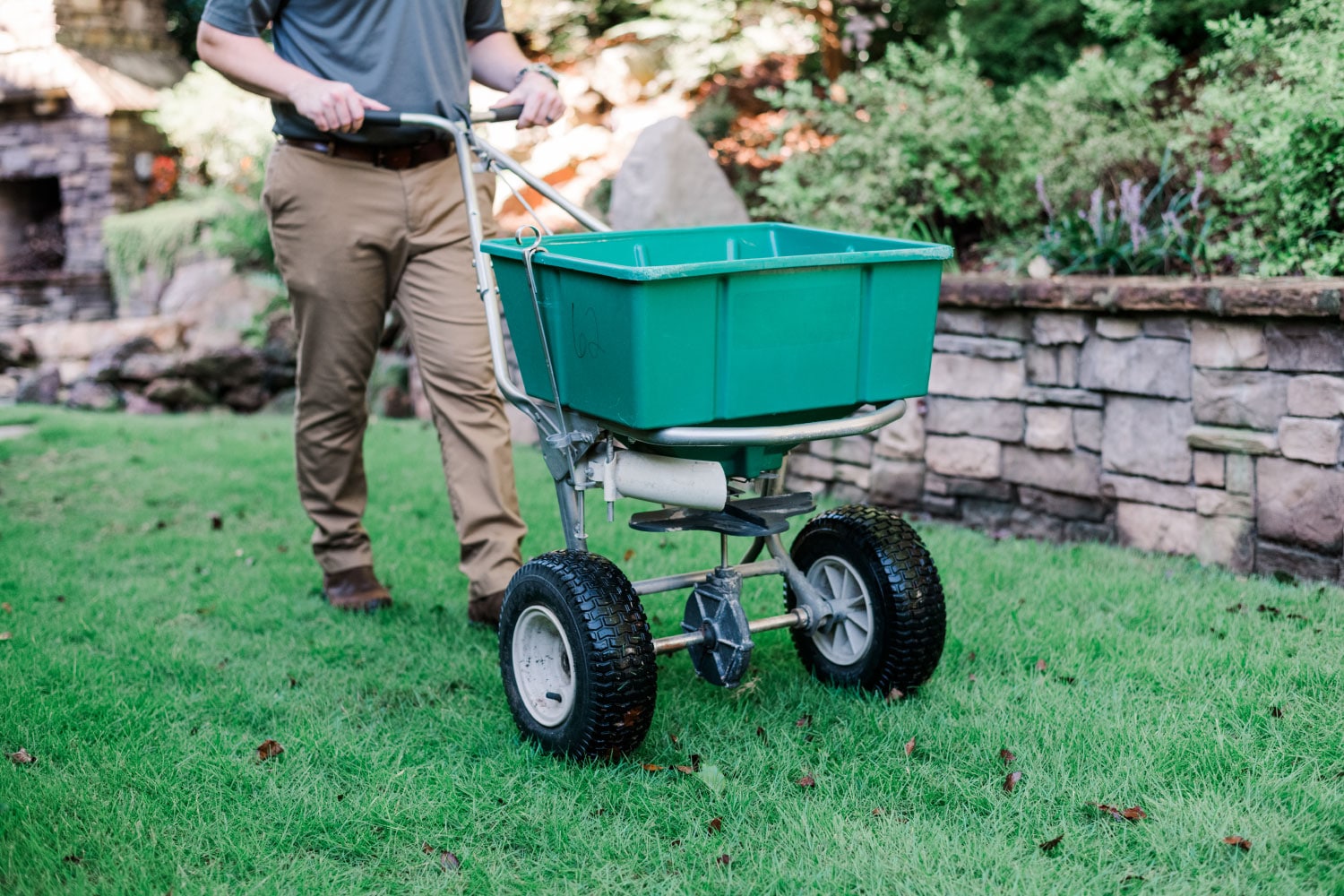1. Not Enough Sun
The orientation of the lot and the position of the house, fences, and other permanent structures can create shady areas where growing turf is more challenging. Here are a couple of solutions to consider:
- Tailor your turf selection to your yard’s specific environment to position your grass for success from square one. While bermuda thrives in full sunlight, it will struggle to be the dense, beautiful lawn you desire in shady conditions. Zoysia is much more comfortable with only 5-6 hours of quality sunlight than bermuda, more readily yielding the aesthetics we want in shaded areas.
- Be selective about where you fight these battles. We can’t readily move our homes, and your yard may require a fence for pets or privacy. In instances where structures create unfavorable conditions, converting these spaces to beds or ornamental plantings more comfortable in low light can make great use of that area and improve the appeal of your yard by refocusing efforts and resources toward areas where turf is most likely to be happy and healthy.
2. Competition from Trees
It seems like this reason should have been included with shade, right? While they do create shade competition, trees also compete for the same water and nutrients that our lawns require. Here are a couple of options:
- Be flexible. Unlike houses and fences, there are more flexible options for trees. In this blog we discuss pruning and removal in greater detail. In summary, different conditions warrant different solutions, ranging from thinning to full removal.
- Consider ornamental trees. Much like the houses and fences discussed above, an ornamental tree can be desirable. If it creates thinness while competing for water or nutrients, the creation of an island redirects attention and resources to areas where turf will naturally be more successful.
3. Poor Drainage
Managing moisture in the landscape is fundamental to uniformity and success for your lawn. Water that collects in low areas or natural runoff points may result in thinness, which can contribute to weed development, moss, algae, or nostoc when combined with other environmental challenges such as shade. Here are some ways to combat poor drainage:
- Direct the flow of water. Take notice when it rains heavily; where does all that water go in your yard? Solutions for directing the water may include: ensuring these runoff areas are clean and able to clear the water from your yard or installing hardscapes to direct the flow.
- Level the low areas. Normalizing a depression will discourage water from collecting in that area, limiting the effects. Shallow holes can be corrected with topdressing materials, while larger ones may require addition of soil and sod.
4. Cultural Practices (What Are Those?)
The term cultural practices envelopes all of the regimented maintenance operations for a system. In the case of turf, cultural practices refer to mowing, watering, and fertilization and can even include less frequently scheduled processes like aeration. Here are some best cultural practices:
- Mow properly. This may be the most important task a homeowner or property manager performs. In the case of bermuda and zoysia, mowing 1.5-2” every 7-10 days maintains density and limits the potential for damage by removing too much material. For fescue, 3-4” every 7-10 days is ideal. Additionally, ensure your blades are sharp to limit mechanical injury and the mower is cleaned regularly to limit the spread of weeds.
- Ensure deep, infrequent watering. A combination of rainfall and irrigation should amount to an inch over the course of a week, and that should be spread across 2-3 non-contiguous days if possible. Deep, infrequent watering encourages deep, healthy root systems. As discussed above, too much water creates thinness from disease or a lack of oxygen, while too little water will kill by desiccation.
- Aerate your yard. Aeration benefits your grass by modifying the soil structure and helping to mitigate thatch formation. The result is better air exchange and water percolation, allowing for a healthier plant and more effective response to treatment.
5. Weed Control and Turf Nutrition
Aeration, weed control, and nutrition are where we, at Nature’s Turf, play a fundamental role in this picture. The points above illustrate the idea of integrated pest management. By selecting the right turf type, minimizing tree competition, ensuring proper drainage, and executing sound cultural practices, the responsible application of intelligently selected products and purpose-chosen fertilizers has the most potential. Here are some more specifics about weed control and turf nutrition:
- Be strategic. Successful weed control is more akin to a game of chess than checkers. It takes strategy to be successful. The strategic use of select pre- and post-emergent weed control products aids sound cultural practices in the suppression of weeds. Without the use of weed control products, relative cleanliness is impossible. A deeper look at this can be found here in a previous blog about these products.
- Feed your turf appropriately. Turfgrass has a number of benefits stretching far beyond its beauty. Water filtration, air purification, oxygen creation, sound dampening, and the reduction of radiant heat compared to asphalt surfaces are just a few. Turf must be appropriately fed to encourage the color and density we desire and the fringe benefits we receive.








